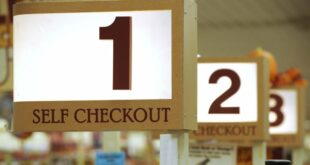Sales of print books enjoying lift from success of genre fiction and interest from young readers.

But publishing sales data and on the ground observations from booksellers indicate that neither prediction has come true — in fact, sales of print books appear to be enjoying a bit of a lift driven by strong performance in genre fiction and interest from younger readers.
Print book sales are up 10‒14 per cent over three years in most major English-speaking markets, says Duncan Stewart, a consumer forecasting analyst for Deloitte who lives in Toronto and specializes in media and technology. He says those are quite nice numbers “for an industry that many people thought was dying.”
When they first gained popularity, industry watchers predicted e-books would soon be the preferred medium for younger readers who were growing up online, he told The Cost of Living, while print books would remain the go-to for their grandparents.

“It was the exact opposite story,” said Stewart. “Interestingly, Kindles and similar e-readers were more popular with the older generations we surveyed, whereas younger people were as interested in print, or more, than their older fellow readers.”
Stewart says that’s because, in addition to e-readers being easy on the eyeballs, older book lovers read more per week, appreciate the portability of having so much to read on a small device and already have full bookshelves at home.
“Meanwhile younger people have empty bookshelves, and love filling them up with their latest reads,” he said.
Younger readers embrace new romance
Stewart says interest from young readers is driving what he describes as “astonishing” growth in fiction sales.
Canadian publishing sales figures are not publicly available, but Stewart says overall sales in the U.S. are up 12 per cent since 2019, while fiction is up 45 per cent.
“Fiction is growing four times faster than the overall book market, and young adult fiction is growing five times faster.”
Part of that is the popularity of new subgenres of romance that tackle social issues head on with themes such as mental illness and domestic violence, he said.
“The Gen Zs, the millennials: they’re powerfully driven by the diversity and the social aspects of these romances. They are buying them not merely because there is a nice love story, but because it reflects the complicated world, including things like environmentalism and so forth that are such important issues to the 18- to 35-year-olds of today.”
Sisters Shannon and Nicola McNaughton are seeing that play out in the bookstore they opened in Calgary in May. Slow Burn Books bills itself as a destination and community hub for romance readers.

“Within romance, there are tons of different subgenres,” said Nicola, “so we carry everything from fantasy, contemporary young adult, sports, romance, dark romance and also monster romance.” (For the latter, think anything with a non-human love interest like a mythical creature or an alien.)
She said customers have told them the inclusivity of the themes tackled by contemporary romance authors “can foster a sense of community, as well as avenues for empowerment and catharsis.”
Nicola said there’s been an increase in representation of racialized and LGBTQ+ authors and characters dealing with an array of topics in romance books.
“But we feel like there is a long way to go to see even more inclusion and representation in what is being published and by whom,” she said.

Despite a new rawness and authenticity in romance, there’s still an escapist appeal that drove interest during the COVID-19 pandemic, Nicola added.
“Romance, in particular, is a very safe genre because there’s always going to be a happily ever after,” said Nicola. “It doesn’t matter the torture that you put me through throughout the book because I know that the characters at the end will be together and that, to me, feels comforting.”
Shannon said it could also simply be because the genre “brings you such joy.”
“But, really, it’s just blown up in the last two years,” she said.
Vibrant social media communities that have sprung up like BookTok and Bookstagram — where blockbuster authors like Colleen Hoover in romance and Sarah J. Mass in fantasy drum up excitement for their books — have only added fuel to that fire.

Silver Barter, 34, looks to those platforms for inspiration on what to read next.
“I think most of my TBR (to be read) is from TikTok or from Instagram,” said Barter, who has read 174 books so far this year after having her interest in reading reignited by The Court of Thorns and Roses series by Sarah J. Mass.
She said that while romance may have been looked down on as a bit antiquated in the past, “now it is more about female empowerment.”
“That’s the lens — that you can be a strong independent woman and you can also want to have romance.”

The trophy book
At Slow Burn Books, Nicola says their customers are often interested in owning the print version of books as “trophies.”
“I’m not sure if this is just specific to romance readers in particular, but it is definitely very a popular trend to … read on an e-reader, and then buy the physical copy as the thing that goes on your bookshelf as kind of almost that physical reward,” said Nicola. Those copies will often be left pristine, with uncracked spines and undog-eared pages.
Consumer survey data from Booknet, a non-profit that develops tools and standards for the Canadian book industry, shows that just 17 per cent of Canadian purchases were in e-book format in 2022, while 47 per cent were paperback and 25 per cent hardcover. The data was collected by Kantar quarterly in March, June, September and December 2022, and has a margin of error of ± three percentage points.
Mike Hamm, manager of the independent bookstore Bookmark that’s been in downtown Halifax since 1989, said the pandemic lockdown periods brought them an enthusiastic new cohort of readers.

“Being in downtown Halifax for so long, we thought we had tapped into every demographic, every market that we thought was out there,” said Hamm. “But there was a new one and it was younger people who had probably grown up online, ordering online, communicating online…. It was probably 18- to 25-year-olds and a lot of young women.”
Hamm said customers seemed to like the personal touch of the bicycle delivery service the store provided during that time.
“So through those dark, dark days, something good did happen for independent bookstores because I know our experience was felt, I think, right across the country.”
The Canadian Independent Bookstore Association said about 30 new independent bookstores have opened in Canada since 2019.
Indigo Books has not faired as well in recent years, but returning CEO Heather Reisman has said she’s looking to turn things around in part by increasing the portion of books to other merchandise from 50:50 to 70:30.

Ellory Douglas, who reads around 125 books per year across a wide spectrum of genres including romance and fantasy, says she appreciates the accessibility of e-books.
“I know there’s a lot of indie authors who that is the primary way that they publish, but I really enjoy personally reading print paperbacks,” said Douglas, who lives just a few blocks from Slow Burn, and has her first romance novel — A Better Proposal, set in Calgary — coming out in two weeks.
“I like that physical feel in my hand. I even like the sound of the page turning. So I do love both. If I had to choose, I would pick paperbacks.”
ABOUT THE AUTHOR

Journalist
Brandie Weikle is a writer and editor for CBC Radio based in Toronto. She joined CBC in 2016 after a long tenure as a magazine and newspaper editor. Brandie covers a range of subjects but has special interests in health, family and the workplace. You can reach her at brandie.weikle@cbc.ca.
Produced by Tracy Johnson
*****
Credit belongs to : www.cbc.ca
 Atin Ito First Filipino Community Newspaper in Ontario
Atin Ito First Filipino Community Newspaper in Ontario






